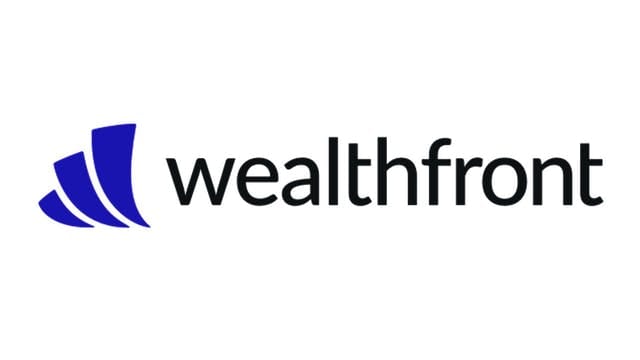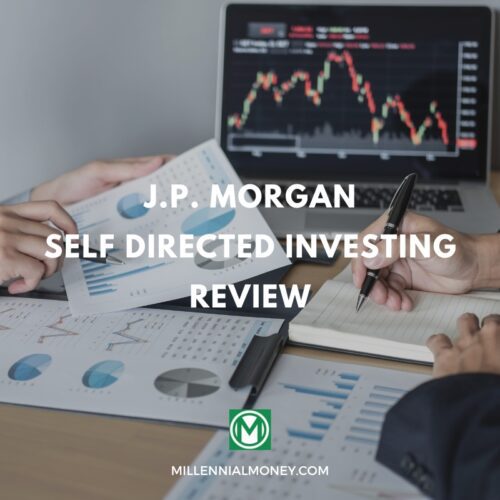Wealthfront is an automated investing service, also known as a Robo-advisor, that provides a reliable option for those who prefer a more hands-off approach to invest. They’ve been around since 2011 and are based in Palo Alto, CA. This firm currently has over $11.4 billion worth of assets under management.
They use Modern Portfolio Theory (MPT) to determine the right set of investments to suit your needs. When signing up for Wealthfront, they’ll ask you a series of questions to find what works best for you.
One of the great things about their strategy is that they give you exposure to both domestic and international funds, giving your portfolio worldwide exposure and ensuring you don’t put “all your eggs in one basket.”
How Wealthfront Works
When you first sign up, you’ll be asked to answer questions such as your risk tolerance and what kind of financial accounts you’d like to add.
Types of accounts include retirement accounts like an IRA or 401(k), cash, or even a mortgage. The purpose of this is to get an overall sense of your financial picture.
At that point, you’ll begin funding your portfolio, which will be invested in a bundle of ETFs and bond funds to match your level of risk.
Note that you must have at least $500 for your initial investment.
Stock-Level Tax-Loss Harvesting
If you have at least $100,000 to invest with Wealthfront, you’ll qualify for additional features such as stock-level tax-loss harvesting.
Stock-level tax-loss harvesting is just as it sounds; instead of tax-loss harvesting an entire ETF, for example, the portfolio contains up to 500 individual stocks. Then, tax-loss harvesting is run on each stock daily.
Smart Beta
With $500,000 to invest, you gain access to its Smart Beta feature.
Smart Beta is a bit more challenging to define. The short version is that it is, according to Wealthfront, “designed to increase your expected returns by weighting the securities in your portfolio more intelligently.”
In essence, it takes optimization one step further in its attempt to eek every last 0.01% out of your portfolio’s returns.
Wealthfront Asset Classes
Investing isn’t always super simple and straightforward; sometimes, things can get a bit murky. Such is the benefit of having a company like Wealthfront working on selecting the best investments for you.
Currently, the Wealthfront team considers as many as 13 asset classes when picking investments for you:
- US Stocks
- Foreign Developed Market Stocks
- Emerging Market Stocks
- Dividend Growth Stocks
- US Government Bonds
- Corporate Bonds
- Emerging Market Bonds
- Municipal Bonds
- Real Estate
- Natural Resources
- Risk Parity
As noted in the article detailing their investment strategy, the mix of these assets could change and evolve. Each one must have the right risk/return balance and the right amount allocated according to your risk tolerance.
For example, if you prefer a more conservative portfolio, you wouldn’t want it to be loaded up with emerging market stocks, which can be quite risky.
Wealthfront uses risk parity to make these adjustments. Risk parity, as they put it, is:
“…a dynamic asset allocation strategy, which aims to deliver a superior after fee risk-adjusted return in a broad range of market environments.”
Dynamic implies ever-changing, meaning they are accounting for the constant changes in the market. Having your portfolio do this for you rather than attempting to do it manually is as helpful as it is convenient.
How Good is Wealthfront?
Wealthfront is excellent for its low management fees, tax-loss harvesting, free financial planning, and automatic rebalancing.
Management fees on Wealthfront portfolios are 0.25%, and the average expense ratio on their ETFs is 0.08%. These fees are on par with the cheapest in the industry; Betterment charges the same management fee for its basic service. Your portfolio will be monitored and rebalanced daily (if necessary).
Occasionally, investment portfolios can become lopsided; typically, you would rebalance them manually on your own. When your portfolio is with Wealthfront, they will do this automatically on an as-needed basis.
Wealthfront Investing Tools
You also gain access to free financial planning tools – even if you don’t have a Wealthfront account. The Path tool, which can be used to track your progress toward long-term goals, such as managing your child’s 529 savings plan.
One of the great things about Path is that you don’t have to invest with Wealthfront to use it. In theory, you could link your financial information and gain access to these tools, all completely free.
Is Wealthfront FDIC Insured?
Yes. However, it’s important to note a couple of things here. Firstly, FDIC insurance covers the balances you have held in Wealthfront’s cash account. Up to $1 million in cash will be FDIC-insured. That’s nice to have, especially since Wealthfront’s cash account has an interest rate that’s competitive with most high-yield online savings accounts.
Secondly, what about your investments? They are insured by the Securities Investor Protection Corporation (SIPC). Up to $500,000 in assets are covered with this insurance. It might initially seem strange that twice as much as is insured compared to your investments.
After all, investments are where the real growth is, and if you stay the course, you could very well have over $500k worth of investments in your portfolio.
However, as Wealthfront explains, SIPC insurance is rarely necessary. It only covers scenarios in which firms shut down due to customer assets going missing. Plus, some non-equity assets such as commodities, futures contracts, and precious metals aren’t covered at all.
Remember that when you invest, you earn a return because you assume a certain level of risk. With a diversified portfolio, you can certainly minimize your risk, but you probably won’t be able to eliminate all risk. Still, the reward usually outweighs the risk when it comes to investing.
Is Wealthfront Worth the Fee?
Whether Wealthfront is worth the fee or not depends on whether you prefer managing your own investments to maximize your return, or you’d prefer to let the pros do the work for you for a small fee. The management fee for a Wealthfront portfolio is 0.25%, one of the lowest in the industry for a robo-advisor portfolio.
That fee will also come with helpful features such as daily tax-loss harvesting and automatic rebalancing. Plus, Wealthfront will select a portfolio for you that aligns with the risk tolerance you indicate when signing up.
Considering everything you get, the fee is very reasonable, and again, it’s one of the lowest in the industry for this type of service. The only drawback is that the management fee will cut into your return somewhat, which means it might be worth managing your own investments if you’re more of a DIY type – and prefer to get the highest return possible.
Can Wealthfront Make You Money?
Absolutely! Wealthfront invests your money in a low-cost, diversified set of ETFs designed to maximize your return on investment. Plus, they will continuously monitor your portfolio and rebalance them to be sure your money continues to grow as much as possible.
The best part is that this strategy works regardless of your risk tolerance. Wealthfront invests your money in a variety of asset classes and will adjust your allocation depending on the risk level you indicate.
Wealthfront has a historical returns page that lets you view how their portfolios have done in the past. This data includes the performance of both taxable portfolios and tax-advantaged portfolios, and you can even view a performance history that matches your risk tolerance.
If you view different levels of risk, you will see that there are no minus signs to be found. However, the shortest time period is one year. Daily, weekly, and monthly fluctuations can often show a loss. Over more extended periods, though, you’re likely to see a positive return.
Pros & Cons of Wealthfront
Pros
- Automatic portfolio rebalancing
- Daily tax-loss harvesting
- Free financial tools
- 0.25% management fee, which is as low as you can get for this type of service
- High-yield cash account included, which can be used as a savings account or emergency fund
Cons
- Customer service is limited; no live chat available
- No fractional shares, meaning you could be left with excess cash
- $500 minimum investment
Is Wealthfront a Good Investment?
Overall, Wealthfront makes investing easier. Just indicate your risk tolerance, fund your account, and Wealthfront does the rest for you. Among the benefits are automatic rebalancing and daily tax-loss harvesting, ensuring you’ll get the best possible return on your investments. The management fee is also quite suitable for this type of service at 0.25%.
That doesn’t mean Wealthfront is perfect, though. Customer service is a bit less comprehensive than it is at some investment firms, and there’s no live chat available. You also can’t buy fractional shares with your money, meaning you could be left with excess cash.
On the plus side, that cash will sit in a cash account that has a high-interest rate – much better than traditional banks.
Overall, Wealthfront offers a competitive service with powerful financial planning tools that will help your money grow at a relatively low cost. You may be able to get a slightly better return managing your money on your own, but having your money grow in a powerful investment vehicle like Wealthfront might be worth the cost.






No comments yet. Add your own